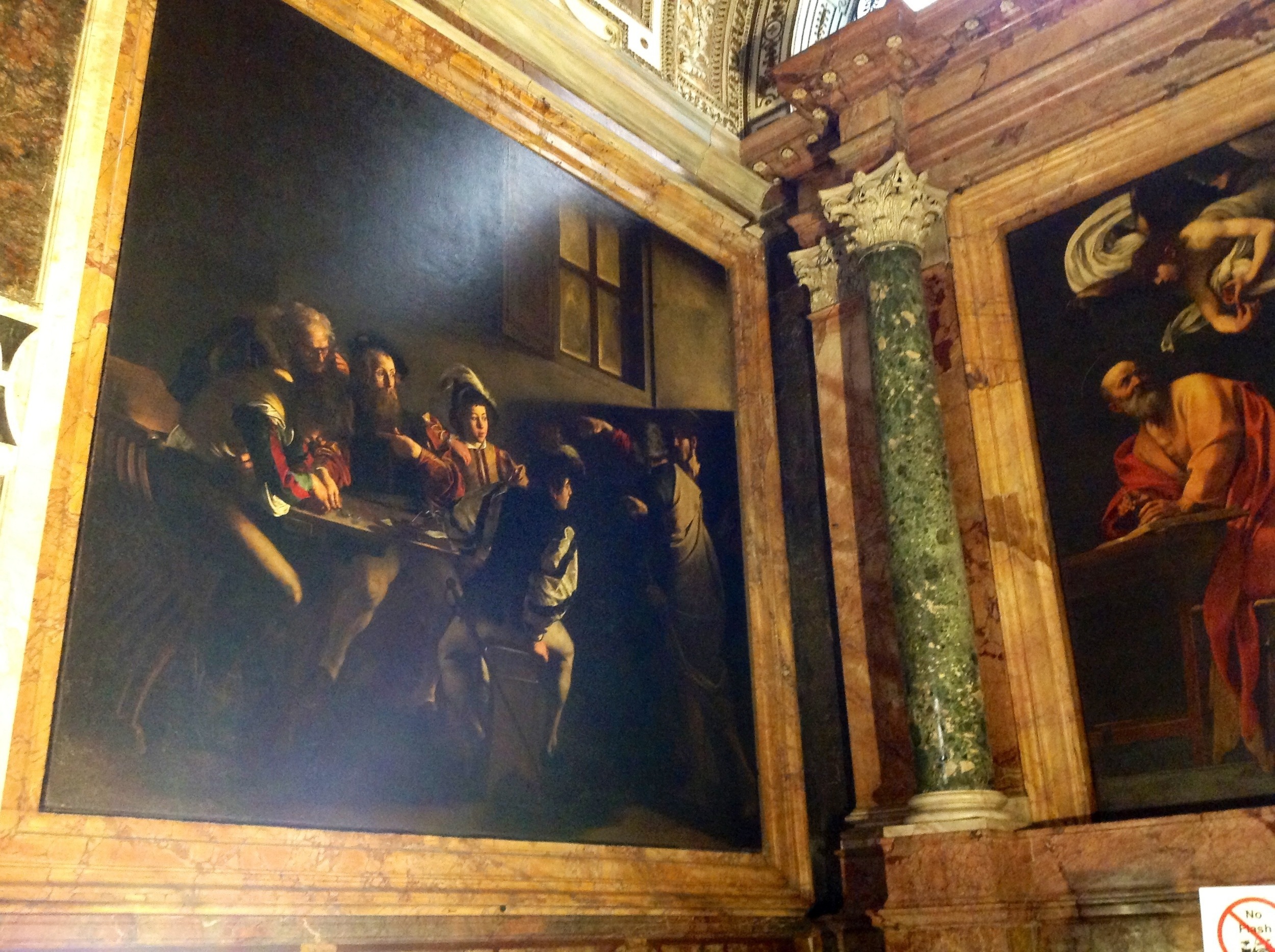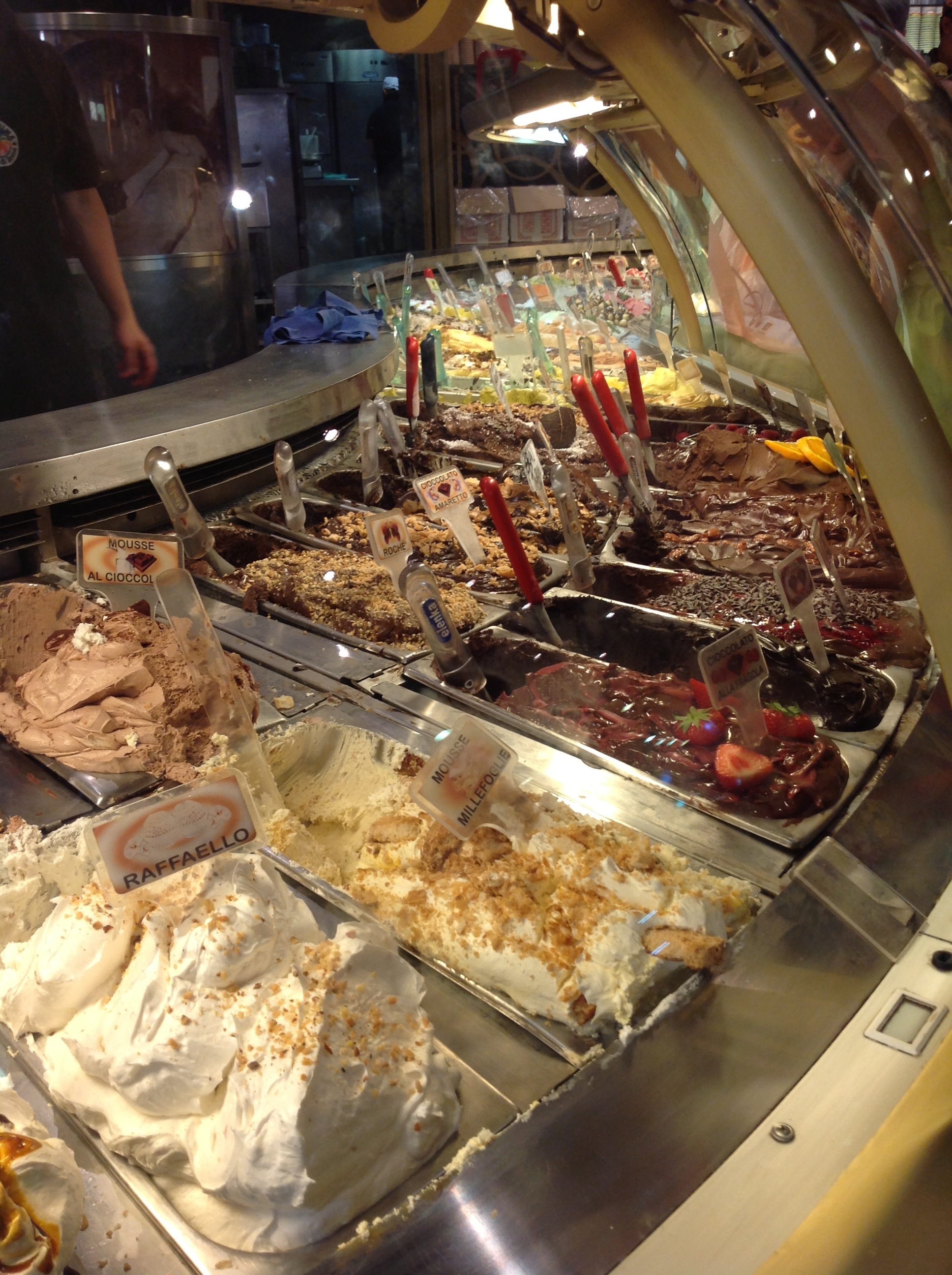When hot, sweaty, and happy in ROME
/Il Colosseo (The — truly colossal — Colosseum); 70 C.E.
Finally, grâce à... insomnia, I've been able to compile and caption, and can now post, this long-delayed report from the day trip I took to Rome with my Creative Writing students on Monday, July 22 — in other words..., two and a half weeks ago.
L'Altare della Patria, a.k.a. Il Monumento Nazionale a Vittorio Emanuele II or "Il Vittoriano" – designed, in 1885, by architect Giuseppe Sacconi; built 1911-1925
***** San Luigi dei Francesi – Roma, Italy
Today, we're exploring — and melting in — Roma, the ancient (hot!) city.
Presently, I'm sitting on the cold marble floor near the three impressive Caravaggios that are ensconced in the Contarelli Chapel in San Luigi dei Francesi. The cool, dimly lit haven is a stark contrast and welcome respite from Rome's busy, cacophonous, and stiflingly hot streets. We navigated our way here from the Colosseum and through the Imperial Forum — both were hemorrhaging tourists (we didn't pay to enter either site) — past "Il Vittoriano" and down Via di Sant'Eustachio, where stopped not for the touted café, but for a refreshing granite instead. Good choice!
Caravaggio's triptych in the Contarelli Chapel, San Luigi dei Francesi
And now, cold marble and stunning Caravaggios. Caravaggio completed the trio of St. Matthew paintings between 1599 and 1600 (left to right): The Calling of St. Matthew, The Inspiration of St. Matthew, and The Martyrdom of St. Matthew
The Calling of St. Matthew (and a portion of The Inspiration of St. Matthew)
In The Calling of St. Matthew, the most highly-acclaimed of the cycle, Matthew is beckoned to assume his saintly vocation. Christ enters the frame — and the mundane world of the interior scene therein depicted — from the right, a hint of a halo hovering over his head. He's dramatically half-bathed in light that spills in from the painting's upper right corner. As the divine shock of light slices diagonally across the picture plane, it casts in relief the features of the men seated around the table with St. Matthew. Most striking is the way it highlights Matthew's left hand, the index finger of which he's pointing at his own chest, incredulous. You can almost hear the bearded man exclaim "Who? Me?!" Add to Caravaggio's signature use of triangular compositional elements (defined by high contrast and strong light emanating from a single, unified source — look! I was paying attention in Art History/Studio Art slide shows in college!) what seems to this Renaissance art novice to be a clear citation of Michelangelo's renowned Creation of Man, and you have a very potent piece indeed.
The Martyrdom of St. Matthew
(Rummaging around for secondary sources just now, I found this Khan Academy short: http://smarthistory.khanacademy.org/contarelli-chapel.html — check it out if you want to see/hear more about Caravaggio in general, and The Calling of St. Matthew in particular.)
San Luigi dei Francesi – designed by architect Giacomo della Porta; built 1518-1589, by Domenico Fontana France's national church in Rome and the incredibly ornate setting of Caravaggio's groundbreakingly austere and mundane portraits of St. Matthew.
**** Later — Although we lucked out by not having to clamor among a throng of tourists to see the Caravaggios [in fact, we had them, for the most part, all to ourselves! though I'm not sure my wilting students were able to fully appreciate our good fortune ;) ], we did eventually have to reenter the fray. We headed from the church to nearby Piazza Navona. Then, again retreating a few steps from the crowds, we zeroed in on an inconspicuous restaurant tucked away on one of the side streets and thus slightly less touristy (there were, for example, the requisite tables occupied by local, elderly men who knew and incessantly chatted with the restaurant's owner), and I ordered... cacio e pepe! It was buonissimo!
Piazza Navona
The Piazza itself is home to multiple impressive fountains. (Wikipedia tells you all about them better, and more efficiently, than I could right now: http://en.wikipedia.org/wiki/Piazza_Navona)
My favorite, and I guess that I'm not alone in this opinion, is Bernini's Fontana del Quattro Fiumi — it's the palm tree in particular that I love.
(Again: http://en.wikipedia.org/wiki/Fontana_dei_Quattro_Fiumi)
Bernini's Fontana del Quattro Fiumi
From here, one wends only a few blocks before finding oneself face to face with another imposing, perennially impressive, ancient monument:
The Pantheon – "commissioned by Marcus Agrippa during the reign of Augustus as a temple to all the gods of ancient Rome, and rebuilt by the emperor Hadrian about 126 AD" (Wikipedia)
Call me lazy, but I'll counter by arguing that I'm just a poor, delayed, insomniac, anti-blog poster — hence, for more on the INCREDIBLE history of the Pantheon...: http://en.wikipedia.org/wiki/Pantheon_Rome
***** More notes to come. For now, a few more photos from the rest of the day, minimally captioned:
Chiesa di Sant'Ignazio di Loyola a Campo Marzio – built 1626-1650; famous for it's "fake," trompe l'oeil dome (above left) and stunning ceiling fresco (above right), both by Andrea Pozzo (ca. 1685)
And of course we had to cool off yet again..., so we indulged in the gelato at the incredible Gelateria della Palma.
Where to next? Well, what Roman monument do you suppose the girls were most excited to see? Or perhaps better: which icon were they most familiar with and primed, by countess cultural artifacts, to anticipate seeing?
Why the Trevi Fountain, of course!
Il Fontana di Trevi / Trevi Fountain – by artist Nicola Salvi; construction began in 1732
Finally, a gratuitous, not-very-successful mug shot to prove that I am, indeed, still alive :) (albeit more corpulent and sun-drenched than usual...). Ciao for now!




















































Looking to balance out the glitz and glamor of the Côte d'Azur? Join me for a short stroll on the Cap Dramont, a coastal section of the stunningly red Massif de l'Esterel of Southeast France.